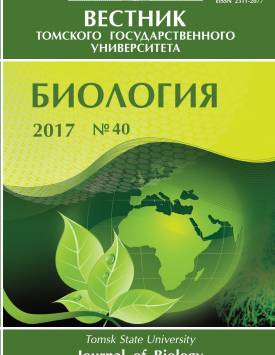Endocrine aspects of reproductive function in men (aged 22-35 years) - residents of the Far North and Arkhangelsk
It is known that due to the negative impact of climatic and environmental factors of the North its permanent residents experience an early depletion of functional body reserves, which leads to premature aging, the emergence and development of age-related diseases, and premature death. The study of the pituitary-gonadal system functioning in men aged 22-35 years, i.e. at the peak of its activity, helps to reveal early reproductive dysfunction signs in the endocrine system. Each participant (residents of Arkhangelsk and the Far North aged 22-35 years) was examined by a physician, and on the basis of his conclusions, the health condition of the participants was judged. Exclusion criteria from the study: the presence of endocrinopathies in the examinee or exacerbation of somatic diseases at the moment of blood test, the body mass index less than 17 kg/m2 and more than 25 kg/m2, and intake of hormonal medicines. Using immunoenzymatic and radioimmunoassay analysis methods, we determined the levels of follicle-stimulating and luteinizing hormones, prolactin, progesterone, total and free fractions of testosterone, estradiol, dehydroepiandrosterone-sulfate, and sex hormone-binding globulin in the blood of men. The examination was conducted during the period of increasing daylight hours (See Fig. 1). It was mandatory for all the people participating in the study to sign an informed consent. It was discovered that the residents of the Far North showed higher levels of FSH, progesterone, prolactin, testosterone/estradiol and testosterone/LH ratios, and lower levels of estradiol and LH/FSH ratio compared to the residents of Arkhangelsk. The leading factor in the correlation interactions between the levels of sex hormones in men was testosterone both in the Far North and in Arkhangelsk. The "age" factor has negative correlations with the content of sex hormone-binding globulin and testosterone and positive - with FSH level in men of Arkhangelsk. The residents of the Far North have no correlations with the "age" factor (See Fig. 2). At the same time, in spite of the revealed differences in hormonal levels in residents of Arkhangelsk and the Far North aged 22-35 years, the analysis of hormones supporting reproductive function in men shows common signs of endocrine imbalance, which is a significant percentage of high progesterone (16.7% and 0%), estradiol (14.7% and 11.1%) and testosterone (11.8% and 0%) values, and low sex hormone-binding globulin ( 17.2% and 28.6%), testosterone (11.8% and 0%) and free testosterone (0% and 17.6%) values. The obtained results suggest developing a complex of preventive measures aimed at fertility preservation in male residents of the northern regions. The article contains 2 Figures and 17 References.
Keywords
sex hormone-binding globulin, sex hormones, Европейский Север, глобулин, связывающий половые гормоны, половые гормоны, European NorthAuthors
| Name | Organization | |
| Kipriyanova Kseniya E. | Federal Research Center for Integrated Studies of the Arctic of the Russian Academy of Sciences | nonsens1986@rambler.ru |
| Tipisova Elena V. | Federal Research Center for Integrated Studies of the Arctic of the Russian Academy of Sciences | tipisova@rambler.ru |
| Gorenko Irina N. | Federal Research Center for Integrated Studies of the Arctic of the Russian Academy of Sciences | pushistiy-86@mail.ru |
References

Endocrine aspects of reproductive function in men (aged 22-35 years) - residents of the Far North and Arkhangelsk | Vestnik Tomskogo gosudarstvennogo universiteta. Biologiya - Tomsk State University Journal of Biology. 2017. № 40. DOI: 10.17223/19988591/40/9
